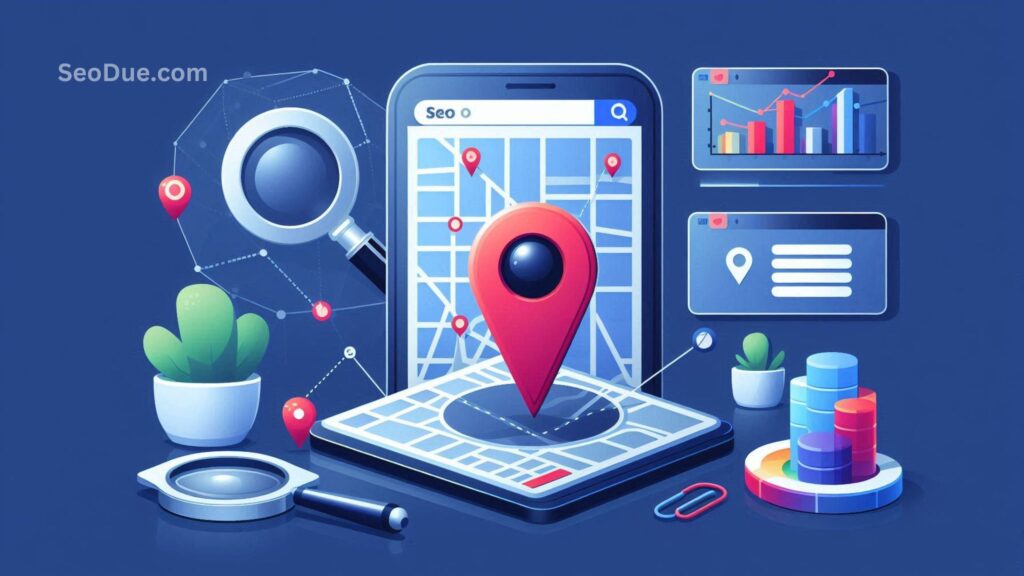How can I Replicate a Successful Local SEO Case Study?
Replicating a successful local SEO case study can really help boost your business’s visibility in local searches. Many businesses struggle with ranking locally, but by following proven strategies from real-life success stories, you can create a plan that works for your business. This guide will take you step-by-step through how to analyze, implement, and refine a local SEO strategy based on a real case study.
What is Local SEO?
Local SEO is all about optimizing your business’s online presence to attract more customers from local searches. It involves strategies like optimizing your Google My Business (GMB) profile, targeting local keywords, building citations, and getting customer reviews.

Businesses that invest in local SEO can show up in the Google Local Pack, dominate “near me” searches, and bring in more foot traffic to their stores.
Understanding a Successful Local SEO Case Study
A local SEO case study is a deep dive into how a business improved its rankings, traffic, and conversions using SEO strategies. A good case study will show:
- The business niche and challenges
- The SEO strategies used
- Key metrics and growth trends
- The obstacles faced and how they were overcome
- The results achieved (e.g., more website visits, higher rankings, more leads)
Looking at these elements will help you spot patterns that you can apply to your own business.
Researching the Right Local SEO Case Study
Not all case studies are the same, so you’ll want to choose one that matches your business. Here’s what to look for:
- Industry Relevance – Does the case study fit your business’s niche?
- Business Size & Location – Is the business similar in size and location?
- Strategies Used – Are the methods applicable to your business?
- Timeliness – Is the case study recent and still relevant to today’s SEO trends?
Finding the right case study will increase your chances of success.

Also Read: What are Some Successful Local SEO Case Studies?
Breaking Down the Strategy Used
Once you’ve found the right case study, look closely at the strategy used:

- On-Page SEO – Title tags, keyword optimization, schema markup
- Google My Business Optimization – Listing updates, reviews, posts
- Off-Page SEO – Backlink building, citations, social media signals
- Technical SEO – Website speed, mobile-friendliness, structured data
Understanding these tactics will help you create your own roadmap.
Keyword Research and Local Intent Optimization
Local SEO starts with finding the right keywords. Here’s how to do it:
- Use Google Keyword Planner to find local search terms with high volume
- Include location-specific keywords (e.g., “best pizza in New York”)
- Analyze competitors’ keywords to spot gaps
- Create locally optimized content that answers common search queries
Getting the right keywords ensures your business shows up in the right searches.

Also Read: How did a Service-Based Business Use Local SEO to Gain Customers?
Google My Business Optimization
A well-optimized Google My Business profile boosts your visibility in local searches. Here’s how to optimize yours:
- Complete your business profile (name, address, phone, website)
- Upload high-quality photos and videos
- Post regular updates and promotions
- Encourage and respond to customer reviews
- Keep your NAP details consistent across all platforms
A well-managed GMB profile can make a huge difference in local search rankings.
Building Local Citations and NAP Consistency
Local citations are business listings on directories like Yelp, Yellow Pages, and industry-specific sites. Keeping your Name, Address, and Phone Number (NAP) consistent across all platforms helps your local SEO.

- Submit to high-authority local directories
- Use the same NAP details everywhere
- Leverage industry-specific citation sites
Inconsistent NAP details can hurt your rankings and damage your credibility.

Also Read: How did a Restaurant Increase Traffic Using Local SEO?
Tracking and Measuring Local SEO Success
Track your SEO efforts with tools like:
- Google Analytics – Tracks traffic and user behavior
- Google Search Console – Monitors search performance and errors
- Google My Business Insights – Shows data on searches and customer interactions
- Rank Tracking Tools – Keep an eye on keyword rankings (e.g., SEMrush, Ahrefs)
Regular tracking lets you spot gaps and adjust your strategy when needed.




Post Comment